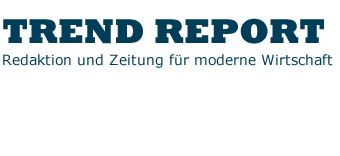Once again: Home office strongly encouraged!
Die Pandemie ist ein globales Phänomen – und so betrifft sie viele Unternehmen auch in gleich mehreren Märkten. Aus dem Grund hat sich Torsten Köbel dazu entschlossen, seinen Beitrag für internationale Leser zu übersetzen.

As it looks, the Covid-19 virus with all the mutations will be with us for quite a while and will affect our lives. So we have to find new forms of existence and cooperation that make sense and are feasible for everyone involved.
In Germany, employers are now obliged to check whether working at home is possible. Exceptions are only permitted for essential business reasons. In addition, employers must support their employees in setting up a home office. This includes, for example, the reimbursement of necessary office supplies or the provision of a workstation that complies with the regulations.
This new regulation was initially valid until March 15 and will now be extended until April 30, 2021. But surely employers and employees will wonder why this model might not be valid beyond the set deadlines. What was normal for some employees even before the Corona pandemic is now increasingly being demanded in the long term by those who previously did not have this option.
Questions now arise for everyone involved:
- How can work in a home office be structured and organized? How can the corresponding change process be initiated in the company? After all, not every workplace can be relocated to the home office very quickly and easily.
- What could solutions look like, such as hybrid working? Can the employer use shift schedules in the office or set up special home office days for the workforce?
- How can the interests of employers and employees be balanced? How do families with children or workers with only very small apartments organize themselves?
- Will the world of work change fundamentally for many employees? How do we deal with suddenly being without direct, face-to-face communication with colleagues? Are we resilient enough to deal with the isolation that may result? Working in a home office requires a lot of discipline and strength, especially for those who are not used to it that way.
Are “Smart New Work” and resilience in the home office compatible?
Many companies have already adapted to these new circumstances during the year 2020, restructuring and reorganizing workflows. Employees have settled into their home offices, and also enjoy the advantages, e.g., no long commute times to the office – whether by public transport or their own car. This also results in fewer costs for each individual. Often, work is more goal-oriented due to fewer distractions in the home office. However, one must not forget the possible disadvantages, which particularly affect employees with small apartments or parents who cannot send their children to kindergarten or school. Here, flexibility is also required from the employer. A „normal“ office day will presumably be less likely to be able to go from 9:00 to 17:00. And: how resilient can a person actually be and remain in such situations?
So, at the moment, it is not primarily about what might come next. The task is to cope with the current circumstances. „We are experiencing a time characterized by volatility, uncertainty, complexity and ambivalence/ambiguity (VUKA). We all need to try to remain as resilient as possible. Smart software tools can help us with this, as well as with organizing our day-to-day work and collaborating with colleagues,“ says Toby Martin, CEO at Extensis.
How can we improve workflows now?
One of the priorities now is to manage efficient workflows and then develop medium- to long-term plans for collaboration. If we assume that the virus and its mutations may be with us for quite some time, we should look for software solutions that can accelerate the change. We need to empower employees to organize themselves even better in the home office, so that collaboration with colleagues can also function more smoothly. Now it is time to invest in tools that offer real added value.
The creative team needs the freedom and the time to be creative!
Especially in areas where large files are created and used, a digital workflow is indispensable. It is often the case that the digital assets required for a creative process are stored in different and difficult-to-access silos. And then the search begins. The wasted time would have been better spent by the creative team on more creative activities.
With a digital asset management (DAM) solution, you can increase productivity, save time, and be more creative. You can empower people in the creative process – both internal and external – to test different typefaces, get inspired by existing materials, and communicate faster and better with each other. Teamwork and collaboration become much easier.
A very welcome side effect: Savings
When you store all digital assets in a single central system, it is not just easier for the creative team to search for and find the materials they need. Your accounting department will also be very pleased, because better organization can result in significant savings. For example, think about usage rights and compliance by media or license expiration. Avoid duplicate purchases of existing fonts. Say goodbye to unused fonts. Keep customers‘ fonts safe and compliant. Ensure that the most current and approved version of an asset is always in use.
With a DAM solution, you are always on the safe side. Your team can get more organized, work more efficiently, and use the time freed up to interact with colleagues, collaborate, and create. And in doing so, the teams can optimally exchange information with each other both in the office and remotely.
Author Torsten Köbel, Country Manager for Germany, Austria and Switzerland at Extensis













